Pea gravel is a versatile, cost-effective way to enhance outdoor spaces. It works well for driveways, garden paths, playgrounds, and even drainage projects.
Its smooth texture and natural look make it a practical and attractive choice for many landscaping needs.
Our Pea Gravel Calculator makes the process simple.
With just a few details, it provides accurate estimates of gravel volume in cubic yards cubic feet or cubic meters weight in pounds, tons, or kilograms the number of bags required and even an estimated project cost.
Whether you’re a homeowner mapping out a small walkway or a contractor filling a large driveway, this calculator is designed for projects of all sizes worldwide
It supports both US Imperial and metric units, so you can calculate in feet, meters yards whatever you prefer.
Our goal is to make your project planning as easy and accurate as possible. This tool is part of the Calculator Gravel suite of calculators which offers specialized calculators for all kinds of construction materials
Let’s dive in and see why our pea gravel calculator is the go-to choice for DIYers and pros alike, and how to use it effectively for your next project!
Why Use Our Pea Gravel Calculator
Using our Pea Gravel Calculator can save you time, money, and headaches. Here’s what makes it stand out from the rest:
Accurate Estimates
Calculates pea gravel volume cubic yards, cubic feet cubic meters weight tons, pounds, kilograms and bags needed with density and compaction adjustments.
Cost Estimation
Add local price per ton, yard, or bag to get instant budget projections and compare bulk vs. bag costs. see our truckload of pea gravel cost guide for tips on bulk purchasing
Simple to Use
Enter length, width, or area plus depth switch between units feet, meters, yards, inches instantly
Save & Print Results
Export or print calculations to share with suppliers, contractors, or clients.
Mobile-Friendly
Works smoothly on phones, tablets, and desktops for on-site or at-home planning.
Global Unit Support
Supports Imperial ft, yd, in and Metric m, cm systems with currency flexibility worldwide.
In short, our Pea Gravel Calculator is designed to be fast, flexible, and incredibly helpful.
It removes the uncertainty from your project planning. Next, we’ll walk you through exactly how to use this tool step by step, so you can get your project rolling with confidence.
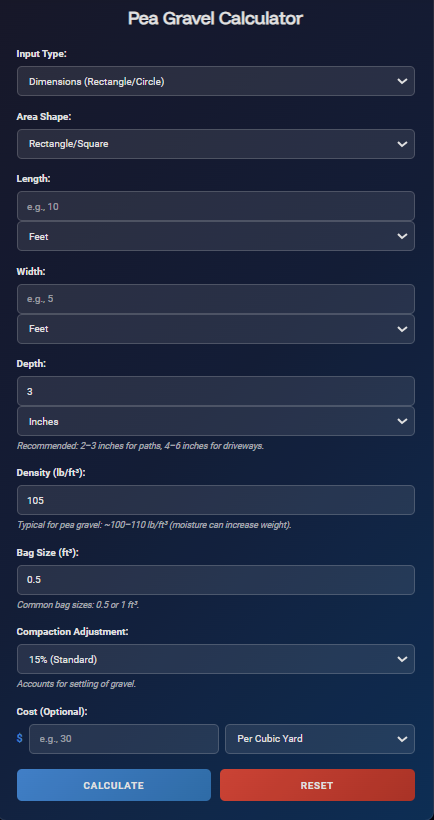
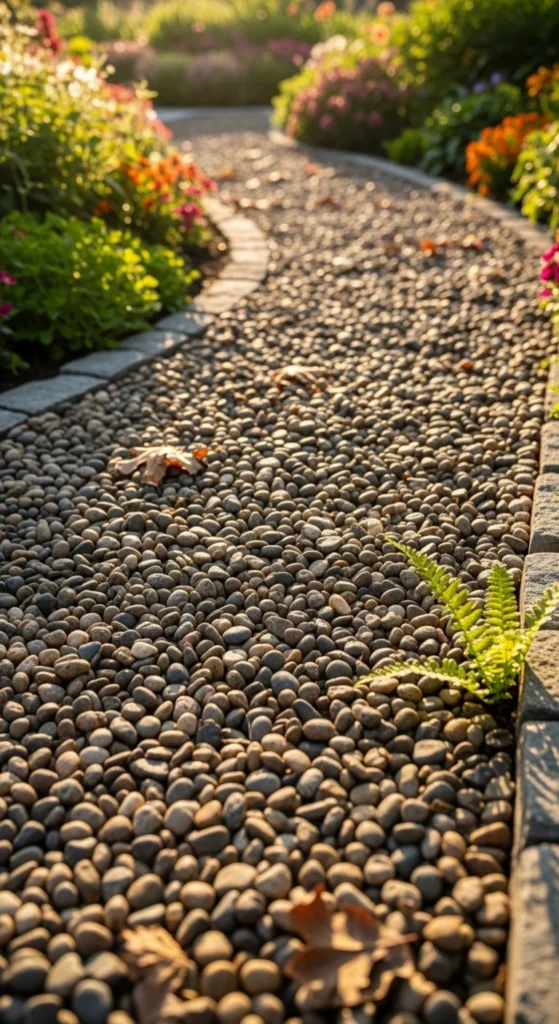
How to Use the Pea Gravel Calculator
Using the calculator is straightforward. Just gather a few measurements about your project, and you’ll have your estimate in seconds. Follow these steps:
Select Your Project Shape/Input Method
First, choose how you want to input your project’s size. You have two options:
Dimensions
If your area is rectangular or circular select this option. You’ll enter the length and width for a rectangle/square, or the radius for a circle. There’s also an option for a triangle if needed. The calculator will compute the area from these dimensions.
Area
If you already know the total area that needs gravel say you measured it or calculated it separately , you can directly enter that. Simply switch to the “Area” input mode and enter the total square footage or square meters, etc. .
Enter the Dimensions or Area:
For Rectangles/Squares: Input the Length and Width of the space to cover.
For example, if your patio is 10 feet long and 5 feet wide, enter those values.
Be sure to select the correct unit feet, meters, yards, etc for each. The calculator can handle any unit you prefer.
For Circles Input the Radius of the circle the distance from the center to the edge
For instance, if you have a circular flower bed 3 feet radius, enter 3 ft. The tool will use the formula Area = π × r² to find the area.
Specify the Gravel Depth
Decide how deep you want the pea gravel layer to be and enter that under Depth.
Common depth choices are in inches or centimeters you can also use feet or meters for very deep fills
For reference typical depth recommendations are: 2–3 inches for garden paths or walkways
4–6 inches for driveways or areas with vehicle traffic, and 6+ inches for playgrounds to provide a cushioned surface.
The calculator automatically converts all measurements to a consistent unit, usually feet, so you can mix units without worry.
You can adjust settings like density pea gravel averages 100–105 lb/ft³ or about 1600 kg/m³, bag size such as 0.5 cu ft or 20 kg bags and a compaction factor typically 10–20% extra to allow for settling
An optional cost field lets you enter prices per ton, cubic yard, or bag, and even compare bulk versus bag purchases.
After entering your details, click calculate to see results instantly. The tool shows total volume in cubic feet, yards, and meters, along with the total weight in pounds, tons, kilograms, and metric tonnes.
If you entered bag size it also displays how many bags you’ll need, and if you added pricing, you’ll see an estimated project cost.
Results can be saved or printed for suppliers or clients and it’s always smart to plan for a little extra about 5–10% more than the exact calculation to cover settling, spillage, or uneven depth.
Our Pea Gravel Calculator makes the process quick and error-free, saving you from tricky unit conversions or math slips.
With just a few inputs, you’ll know exactly how much pea gravel your project needs. If you’re working with other materials, don’t miss our Stone Calculator for estimating larger rocks or stones it’s just as easy to use.
Pea Gravel Calculation for a Project example
Sometimes it helps to see a concrete example. Imagine a small patio project and we want to calculate the pea gravel needed.
Project: A rectangular patio measuring 10 feet long by 5 feet wide. The total area is 50 square feet.
Depth: 3 inches of pea gravel, a standard depth for patios.
Density: Using the default of about 105 lb/ft³.
Bag Size: 0.5 cubic feet per bag, a typical store size.
Compaction: 15 percent extra to allow for settling.
Cost: Local price of 30 dollars per cubic yard.
After entering these values, the calculator gives:
Volume Needed: about 14.4 cubic feet, equal to 0.53 cubic yards or 0.41 cubic meters.
Weight Needed: about 1,510 pounds, equal to 0.75 US tons or 685 kilograms.
Bags Required: 29 bags of 0.5 cubic feet each.
Estimated Cost: about 16 dollars if buying bulk, compared with about 116 dollars if buying 29 bags at 4 dollars each.
This shows you would need roughly half a cubic yard of pea gravel, weighing three quarters of a ton. Bulk purchasing is far more cost-effective in this scenario.
Coverage Tip: One US ton of pea gravel (2,000 lb) covers about 100 square feet at 2 inches depth or 80 square feet at 3 inches. Our example matches this rule of thumb, with three quarters of a ton covering 50 square feet at 3 inches.
The Pea Gravel Calculator provides a clear breakdown of volume, weight, bags, and cost. You can adjust the dimensions or depth and instantly see new results, making it easy to test different project scenarios without doing any manual math.
Why Choose Pea Gravel for Your Project?
You’ve done the math but why use pea gravel in the first place? Pea gravel is a popular landscaping material for many good reasons. Here are some of the top benefits of using pea gravel in outdoor projects:
Attractive Appearance
Pea gravel is made of smooth, rounded stones about 1/4–3/8 inch in size, available in natural shades of gray, tan, white, brown, and even subtle blues or reds. Its timeless look works with both rustic and modern landscapes for driveways, walkways, and garden beds.
Affordable Material
At around $30–$60 per cubic yard or $25–$50 per ton, pea gravel is one of the most budget-friendly landscaping options. It costs less than pavers, brick, or decorative stone, making it ideal for covering large areas like driveways without overspending.
The small stones naturally allow water to filter through, preventing puddles and runoff. It’s a smart choice around drains, downspouts, and rain gardens, helping control erosion while keeping surfaces dry and functional.
Pea gravel doesn’t decompose, discourages weeds, and only needs occasional raking to stay neat. With edging, it stays contained, remains comfortable underfoot, and can look fresh for years with minimal upkeep.
Common Uses for Pea Gravel (and Recommended Depths)
Pea gravel can be used in various parts of your landscape. Different applications have different best practices particularly when it comes to how deep the gravel layer should be. Here are some of the most popular uses of pea gravel and guidelines on depth and installation for each:
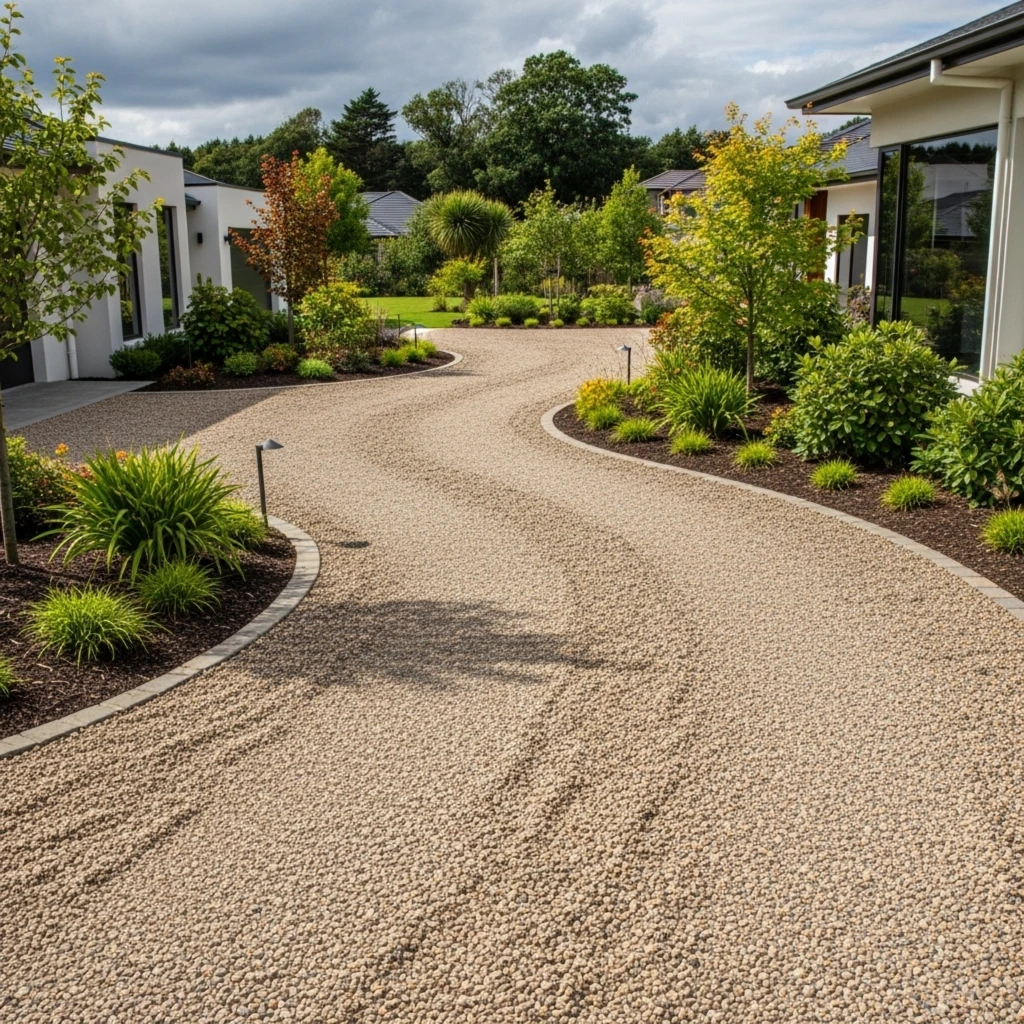
Driveways
When using pea gravel for a driveway, a deeper layer is needed to support vehicle traffic.
Recommended Depth: 4–6 inches of pea gravel.
It’s often best to install pea gravel driveways in layers: for example, start with a base of coarser crushed stone to provide stability and then top it with a few inches of pea gravel for a smooth finish.
The base layer might be 3-4 inches of crushed stone, topped with 2-3 inches of pea gravel.
Also, edging along the sides of the driveway is highly recommended like metal, stone, or wood borders to keep the gravel from spreading out into your yard.
Paths and Walkways
For garden paths, footpaths, or walkways, pea gravel provides a comfortable, natural walking surface.
Recommended Depth: 2–3 inches. A two-inch depth is usually sufficient for coverage over bare ground or landscape fabric, especially if it’s a lightly traveled garden path.
If the path will see heavier foot traffic or occasional wheelbarrow use, lean toward 3 inches.
As with driveways, some form of path edging (brick, metal, plastic edging, etc.) will help keep the pea gravel neatly contained on the path and not migrating into your lawn or flower beds.
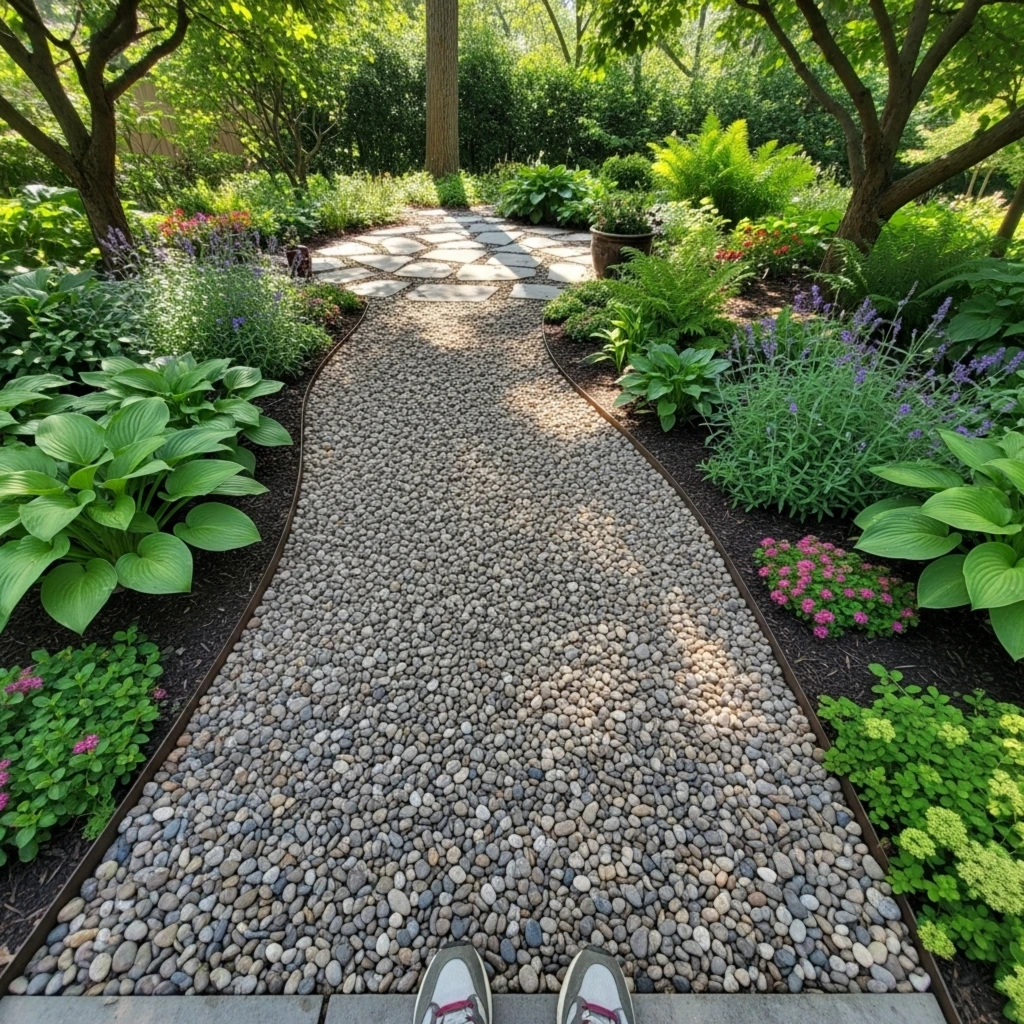
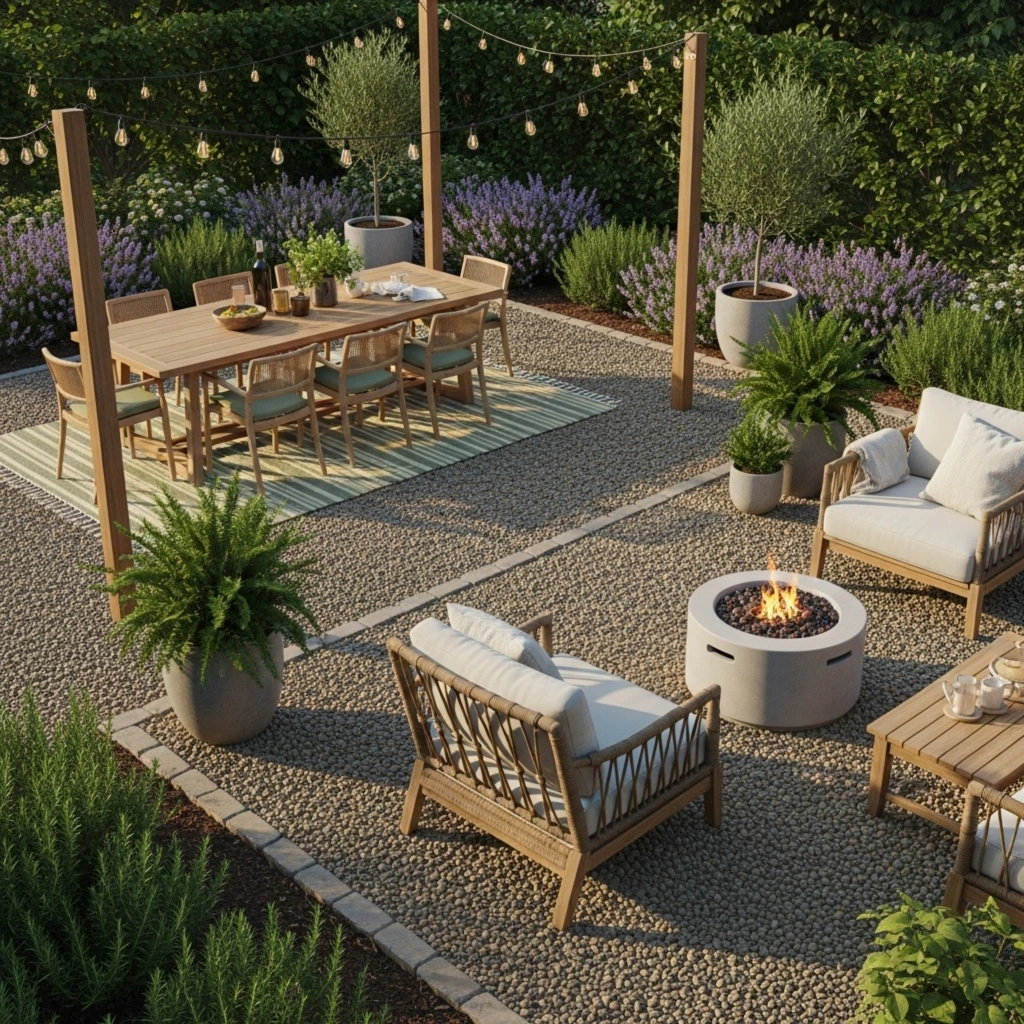
Patios and Seating Areas
For a pea gravel patio you’ll want enough depth to fully cover the ground so you don’t see bare spots, but not so deep that chairs will sink too much.
Recommended Depth: about 3–4 inches. At 3 inches, you get good coverage; 4 inches gives a slightly more cushioned feel underfoot.
It’s wise to prepare the base of a pea gravel patio by clearing vegetation and laying down a weed barrier fabric.
Some people also put a few inches of compacted hardcore or sand underneath, but with pea gravel it’s not strictly necessary if the ground is firm and well-draining.
Once the pea gravel is spread, you can stabilize furniture by slightly clearing or leveling the gravel under chair/table legs, or use wider pads under furniture legs since the gravel will shift a bit under concentrated weight.
Pea gravel is often used in playgrounds and play areas because it cushions falls and resists insects. A depth of about six inches is usually recommended, with up to nine or twelve inches for extra safety depending on the equipment.
To keep it effective, rake the gravel occasionally to level out thin spots and use a border to hold it in place.
For drainage projects such as French drains, swales, or dry creek beds, pea gravel allows water to flow while preventing erosion.
A surface depth of two to four inches is typical, often placed over larger stone or landscape fabric to improve durability and performance.
In garden beds and borders, pea gravel works well as mulch or groundcover.
A thin layer of one to two inches over landscape fabric keeps weeds down, prevents mud splashes, and creates a neat, lasting finish that complements plants.
It is always wise to order a little extra gravel, usually five to ten percent more than calculated, to cover compaction or future touch-ups.
Edging with stone, wood, metal, or pavers helps contain the gravel neatly and reduces the need for ongoing cleanup.
How to Calculate Pea Gravel Manually
You have seen how simple the calculator is. If you want to verify the math by hand, follow these clear steps using areas, volumes, and unit conversions.
Step 1 Calculate the area. For a rectangle, multiply length by width. For a circle, use pi times radius squared. For irregular shapes, split into simple parts and add the areas. Keep the result in square feet for the next steps.
Step 2 Set the desired depth and convert to feet. Inches to feet is inches divided by twelve. Centimeters to feet is centimeters divided by 30.48. Use one unit system throughout.
Step 3 Find volume in cubic feet by multiplying area by depth. Add a compaction allowance by multiplying by 1.10 to 1.20 when you want extra material for settling.
Step 4 Convert volume if needed. To cubic yards, divide cubic feet by 27. To cubic meters, multiply cubic feet by 0.0283168466.
Step 5 Estimate weight. Multiply cubic feet by density. Typical pea gravel density is about 105 pounds per cubic foot. Convert to US tons by dividing pounds by 2000. Convert to kilograms by multiplying pounds by 0.45359237 and to metric tons by dividing kilograms by 1000.
Step 6 Bags and cost. Bags needed equals cubic feet divided by bag size, then round up. Cost equals quantity multiplied by your local price per yard or per ton or per bag.
These are the same calculations performed by the Pea Gravel Calculator. It applies your dimensions, depth, compaction, and pricing instantly so you get accurate results without manual work.
How much pea gravel do I need for a driveway?
To cover a standard 10 ft × 20 ft driveway at a depth of 4 inches, you’ll need approximately 1.73 cubic yards or about 2 US tons of pea gravel. This estimate assumes a gravel density of 100 lbs per cubic foot and a 15% compaction factor to account for settling. For more accurate calculations tailored to your specific dimensions and preferences, use our Pea Gravel Calculator.
And if math isn’t your thing, just plug your driveway dimensions into our Driveway Gravel Calculator it’s a tool specifically set up for driveways, accounting for recommended depths and multiple layers
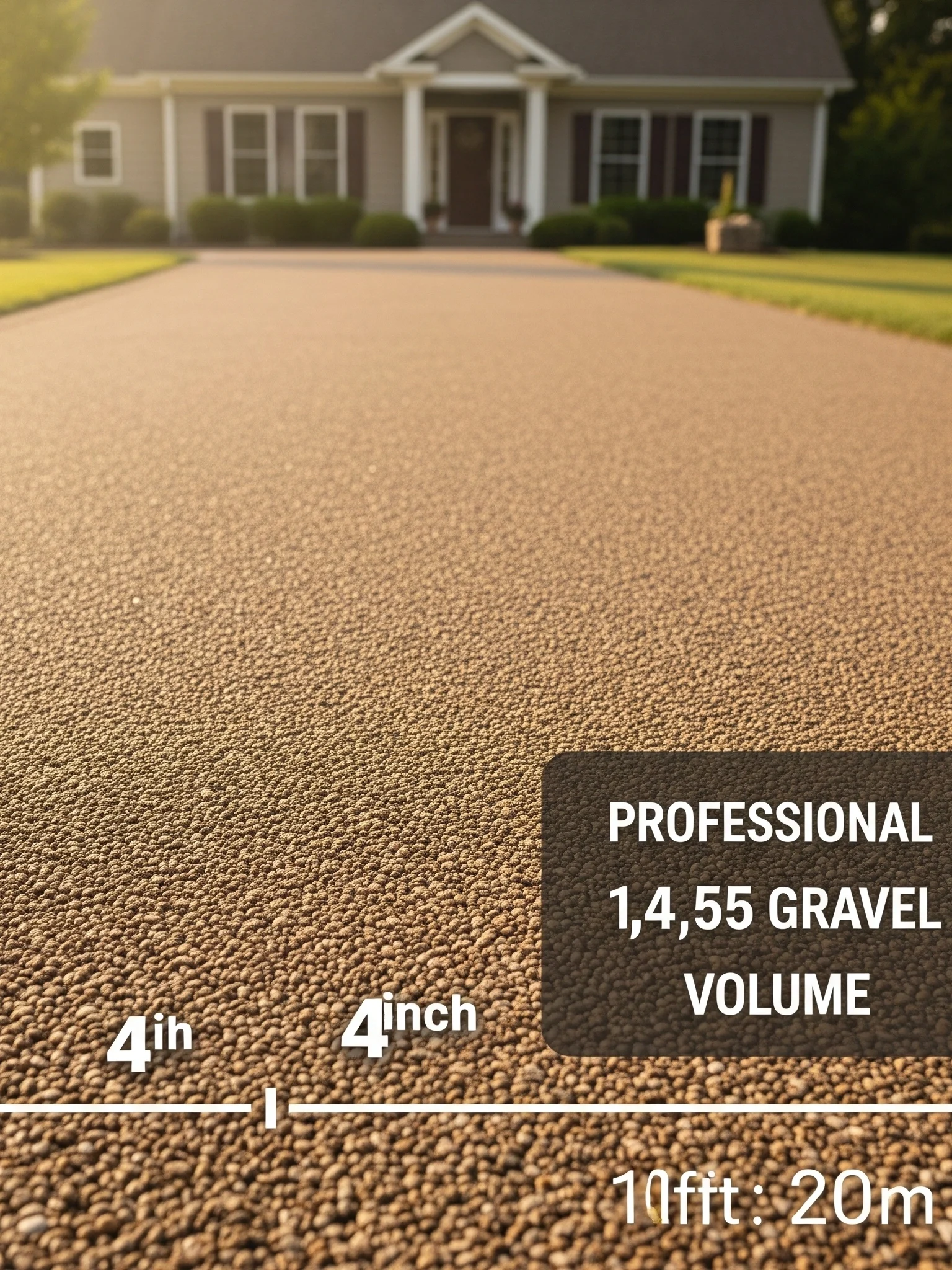
How much does pea gravel cost?
Pea gravel typically costs $25–$50 per ton, sometimes up to $70 for specialty colors. By the cubic yard, expect $30–$80, with $40–$50 common. Bagged stone runs $4–$8 per 0.5 cu ft and is usually the most expensive way to buy.
One ton is about 0.66 cubic yards, one cubic yard is 27 cubic feet or 54 bags of 0.5 cu ft, and one cubic yard covers about 100 sq ft at 3 inches deep.
For a quick budget, use $50 per ton as a midrange price, then add delivery fees of about $50–$100 if applicable. Buy local bulk for large areas, use bags only for small touch-ups, and choose standard mixed colors for the best value.
Enter your local price per ton or per yard in the calculator’s cost field to get an instant total, and see more bulk pricing tips in our Truckload of Pea Gravel Cost Guide .

What depth should I use for a playground?
For playgrounds, a depth of 6 to 12 inches of pea gravel is recommended to meet ASTM F1292 safety standards. This ensures adequate cushioning to reduce the risk of injury from falls. The exact depth can vary depending on equipment height and local regulations, so it’s wise to confirm with your local authority or safety guidelines before starting.

How do I measure an odd-shaped area?
Measuring an irregular or oddly shaped area is simple when broken down into smaller geometric shapes. Divide the space into rectangles, triangles, and circles, calculate each shape’s area, and then add them together. Once you have the total square footage or square meters, enter that into the calculator under the “Area” field for a quick and accurate result.

How many bags of pea gravel do I need?
To determine how many bags you need, divide the total volume of gravel required by the size of each bag. For example, if your project requires 17.25 cubic feet of gravel and you’re using 0.5 cubic foot bags, you’ll need 35 bags (rounded up from 34.5). Our calculator automates this process, helping you avoid over- or under-buying.
Is pea gravel good for drainage?
Yes, pea gravel is excellent for drainage. Its small, rounded stones create natural gaps that allow water to flow through easily, making it ideal for use in French drains, dry riverbeds, or around foundations. For optimal drainage performance, apply pea gravel at a depth of 2 to 4 inches.

How do I keep weeds out of pea gravel?
To prevent weeds from growing through your pea gravel, start by laying down a high-quality landscape fabric before spreading the gravel. This acts as a physical barrier to weed growth. For added protection, you can also apply natural weed control methods like vinegar or eco-friendly herbicides once or twice a year to maintain a neat, weed-free surface.

Is pea gravel cheaper than other gravel?
Yes pea gravel is typically one of the cheapest landscaping gravels. It’s usually cheaper than decorative gravels and many crushed stones, and far below larger river rock or colored options
only bulk base materials like road base or crusher run sometimes match or beat it. Prices vary by region, but for visible landscaping, pea gravel is generally the best-value choice.
How much area does a ton of pea gravel cover?
1 ton of pea gravel covers ~100 sq ft at 2 depth, ~80 sq ft at 3 , and ~60 sq ft at 4 .In metric, that’s ~10 m² at 5 cm depth; actual coverage varies with density (about 100–110 lb/ft³) and compaction use the calculator for a precise number.
What are the disadvantages of pea gravel?
Pea gravel looks great and drains well, but it has trade-offs. The smooth, round stones tend to move and spread, so traffic pushes them to the sides and down slopes.
They don’t compact into a firm base, making them unstable under wheels, heels, or heavy loads, and they can scatter into lawns or get tracked indoors. Debris and weeds can build up without routine care, winter snow removal is tricky because shovels and blowers lift stones, and on steep grades the gravel migrates downhill.
You can reduce most issues with solid edging, a compacted angular-stone base, stabilizing grids where needed, and occasional raking and top-ups. If you need a firmer, more accessible surface, consider crushed stone, decomposed granite, or paving instead.
is 2 inches of pea gravel enough?
Two inches of pea gravel can be enough for light-duty areas like garden paths and planting beds, especially over landscape fabric and a reasonably firm base.
It can also work as a thin decorative top layer on a patio, but three inches is usually better for keeping furniture stable and preventing bare spots.
For driveways or vehicle traffic, two inches is not sufficient; plan on four to six inches over a compacted angular-stone base.
Play areas need much deeper coverage, around six inches or more. If you are unsure, choose three inches for longer-lasting results, understanding it uses about fifty percent more gravel than a two-inch layer.